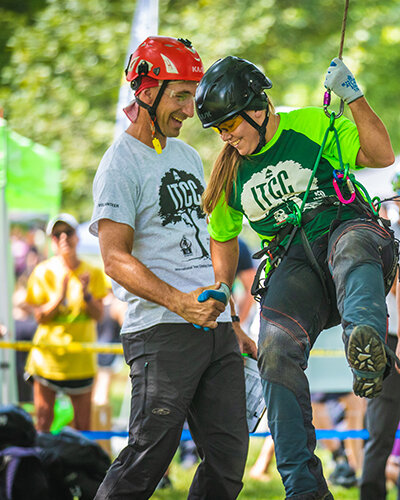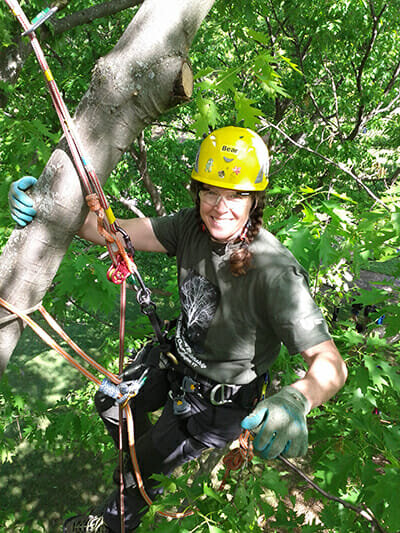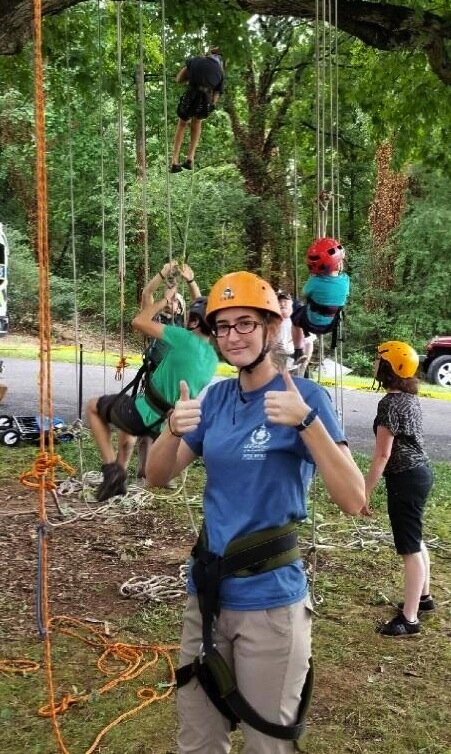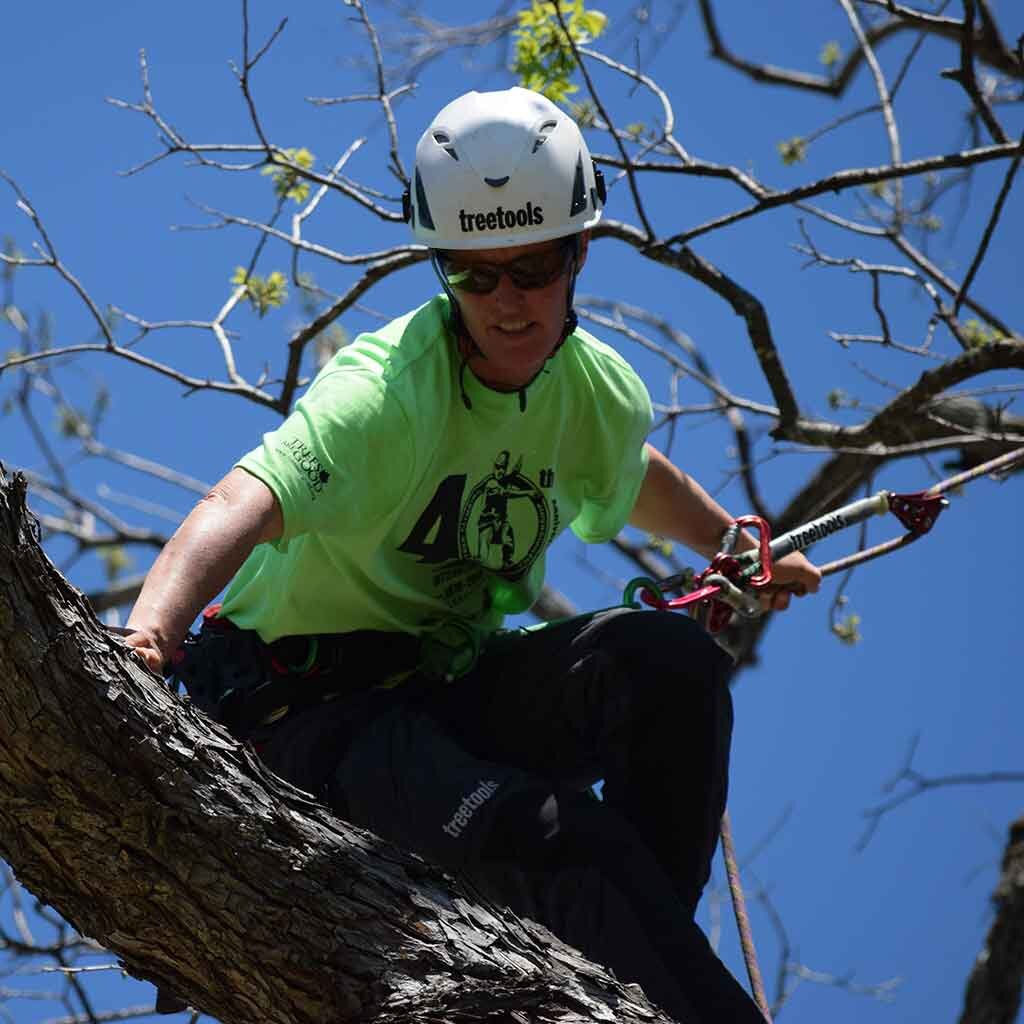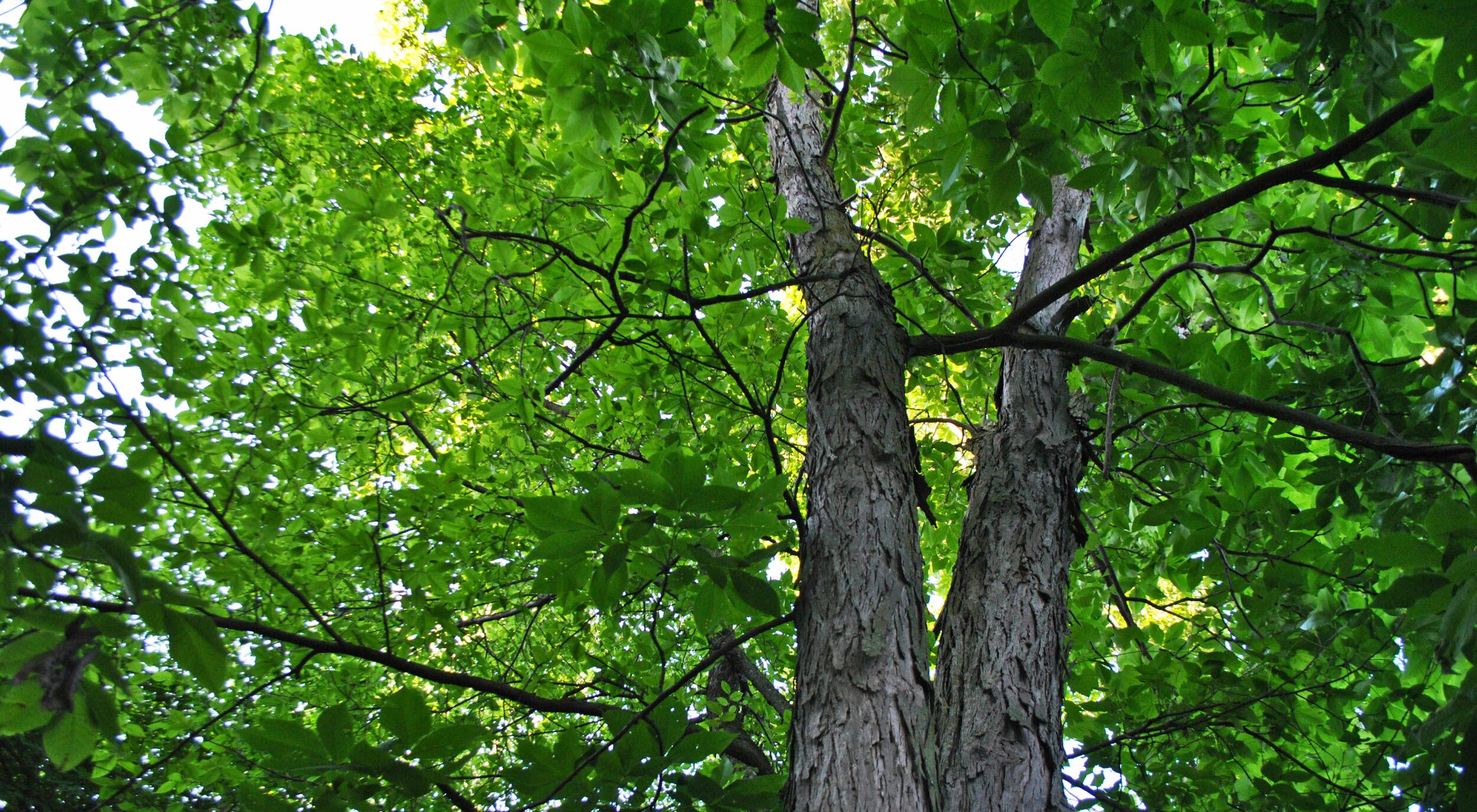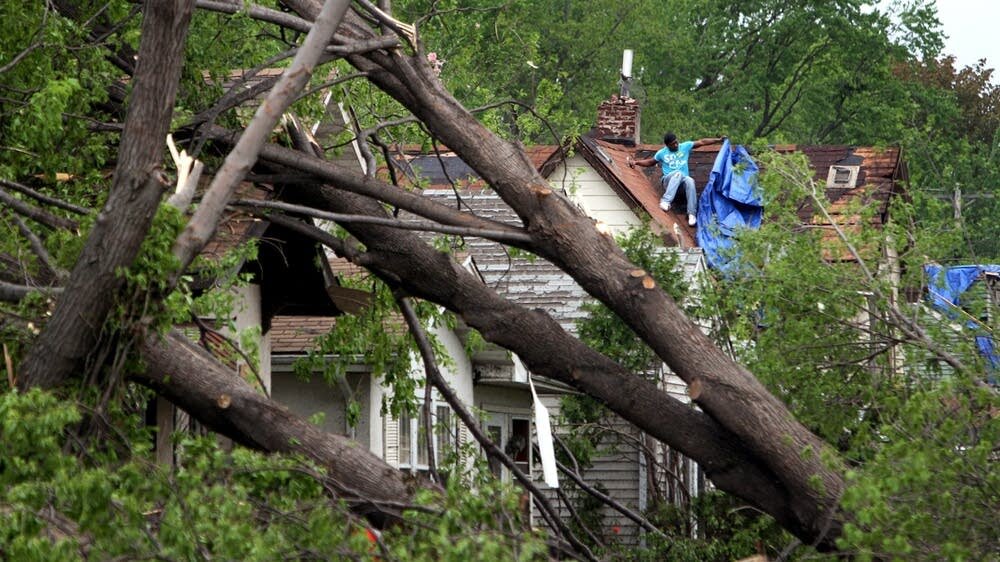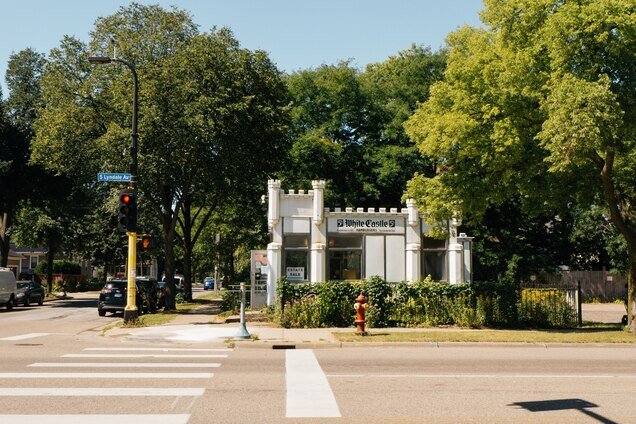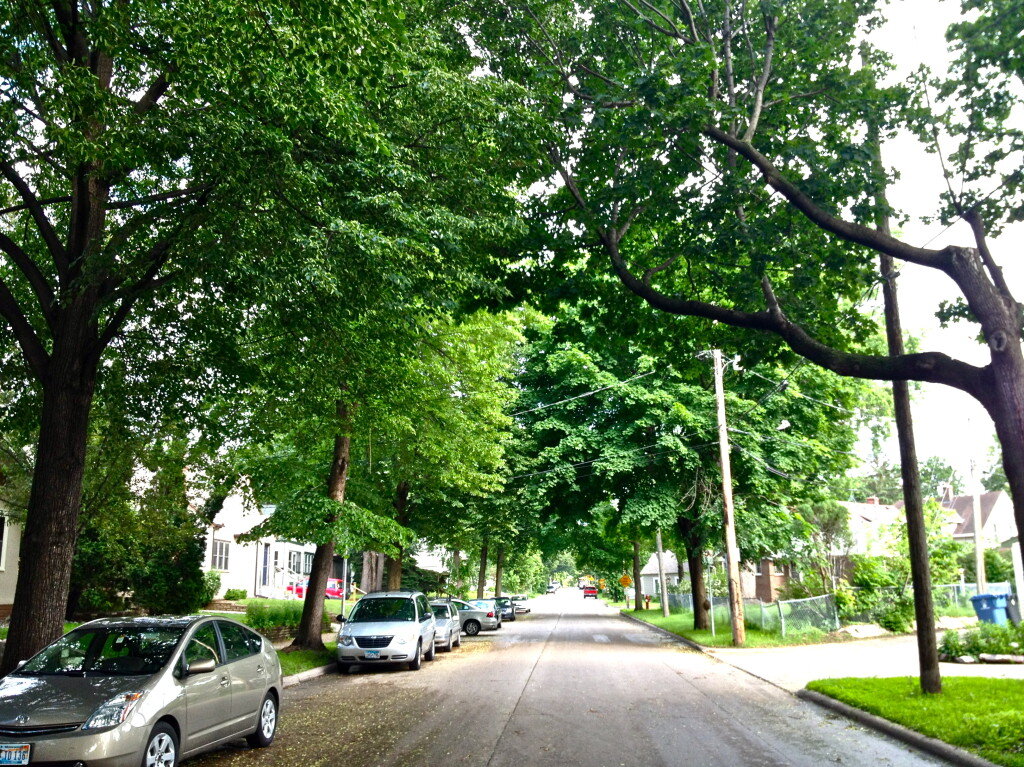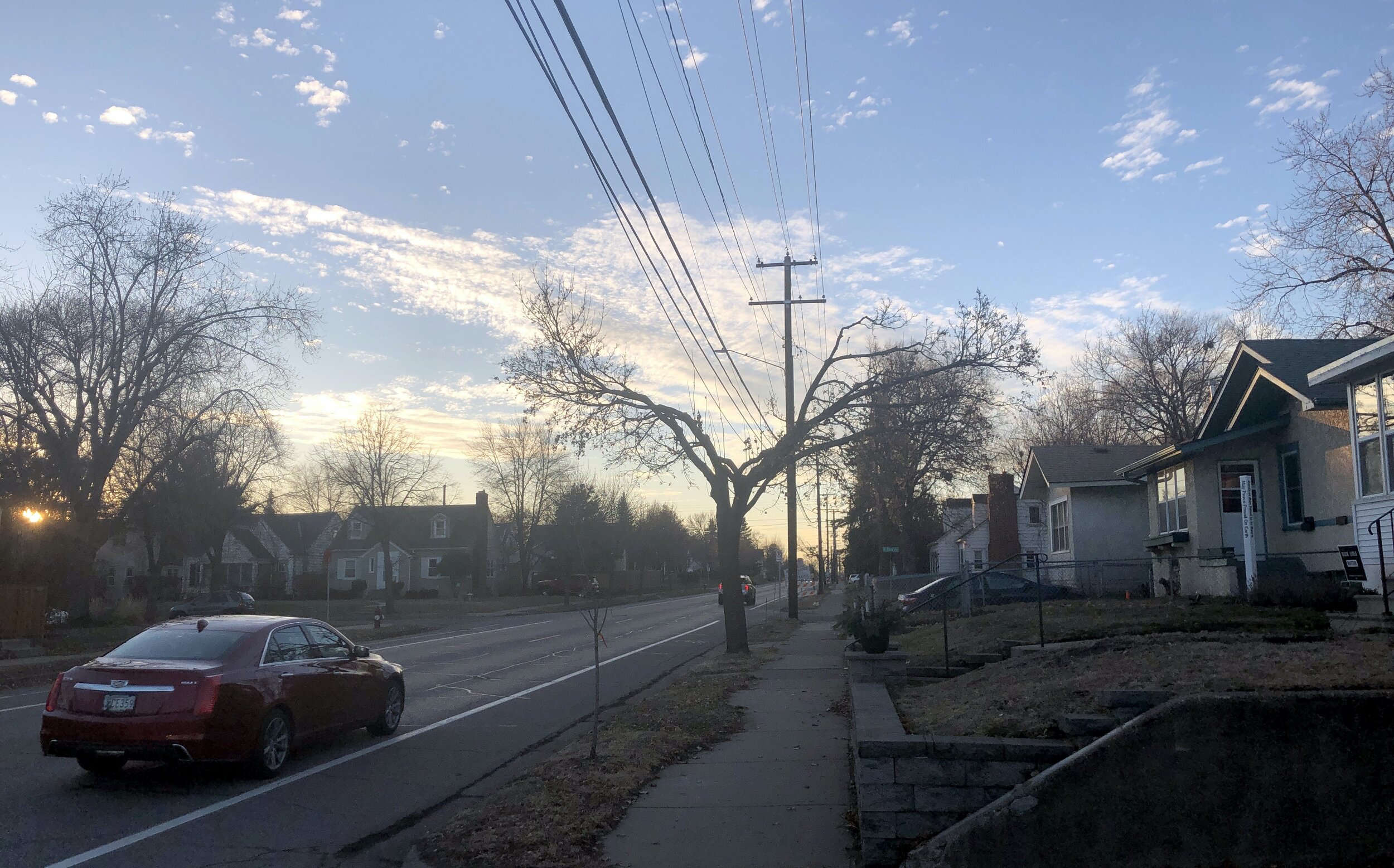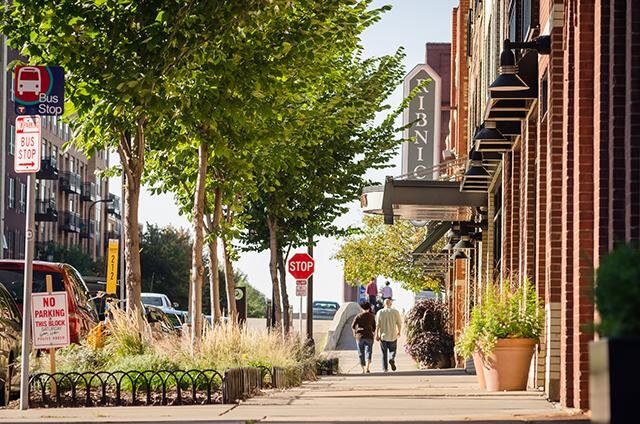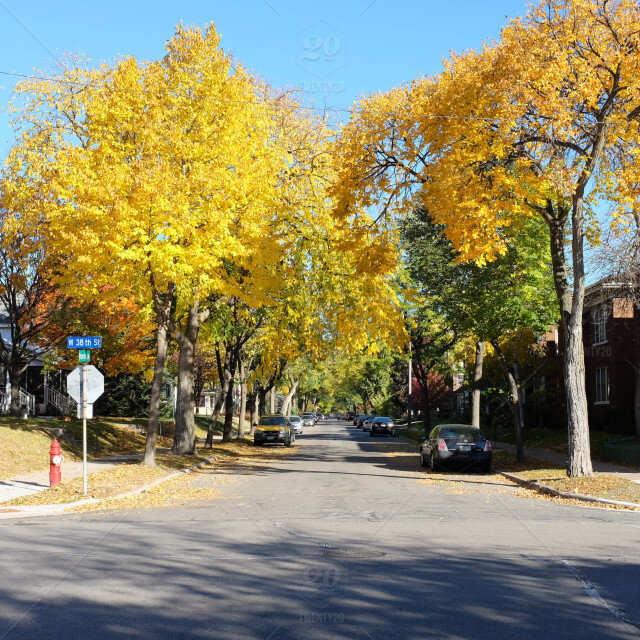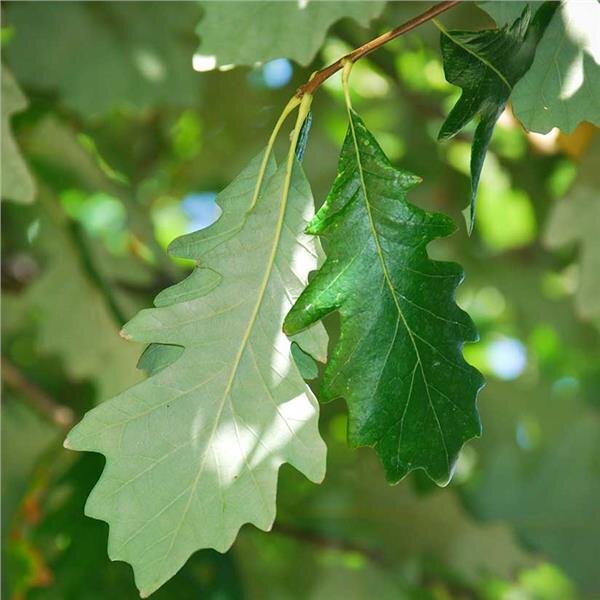Lynn Welles - She Who Speaks for the Trees
/Lynn Welles is the strong, silent type.
Her physical prowess is hard-earned, and she listens well before she speaks. Lynn’s responses when asked about her life are measured, thoughtful, a tad reluctant. “I grew up between two brothers,” she offers, to indicate her early mechanical propensities and propulsion, “I loved the physical side of being a kid.” Her observational skills are sharp and have served her across her professional life. “My training is in Social Work and I am an EMT [Emergency Medical Technician]; I’ve had a double career in mental health and social work, and arboriculture.”
That duality is consistent, and Lynn seems more comfortable doing than describing. She has pursued tough-as-nails hobbies (rugby, running) and followed the tough professional path of female entrepreneur / arborist. Lynn and her husband, fellow arborist, George Welles, own Northeast Tree in Minneapolis, where they specialize in urban tree care. 27 years ago, when Lynn and George started their business, not many women were in the field. “There has been a recent push for women in the industry,” she explains. The International Tree Climbing competition, for example, has hosted a women’s division for the past 15 years. “Women are great climbers.” Lynn points to the evolution in equipment and the physics of the “strength to weight ratio” that makes for good agility ascending and working in trees with ropes and pullies, as the crews at Northeast Tree do. She has advice for those who may follow in her footsteps: “You have to have physical fitness.”
To tend urban trees like Lynn does, you’ll have to have intellectual and emotional fitness as well. Lynn understands the economics and the science that make the urban tree canopy so essential for prosperous cities and healthy humans. Large trees “up” the curb appeal, energy efficiency, and value of urban homes. Trees clean the air, slow water runoff, and diminish urban “heat island” effects. And the presence – or absence – of trees often indicates the economic inequities of a city: wealthy neighborhoods are leafy and green; poor neighborhoods, a proxy for neighborhoods with majority residents of color, often have less tree cover, depressed home values, and diminished human health.
Variety and abundance make trees an indicator species for mental and social health as well. “Vegetation in urban areas is a huge plus,” notes Lynn. “You are more likely to go for a walk if there is a healthy tree canopy. Blocks with shade draw people, build community. People will say, ‘It feels nice, it feels comfortable.’ Trees are a shared feature, and they add to privacy. They can create both a barrier and an invitation to enjoy the space.”
While trees are a primary design element in placemaking, success in cities can be elusive. The Twin Cities maintain a celebrated “tree aesthetic,” as both Minneapolis and St. Paul are long-time Arbor Day Foundation “Tree City USA” designees, demonstrating each city’s commitment to the urban forest. Urban legend suggests that the city of Minneapolis almost selected “City of Elms” as its nickname before settling on “City of Lakes.”
But growing trees in urban areas is hard. Trees in northern cities battle tight spaces; root competition with hardscape and infrastructure; winter road salt contamination; invasive fungi and pests (Dutch Elm Disease; Emerald Ash Borer), ever-competitive municipal budgets and shifting political priorities. Boulevards and yard trees rely on residents for irrigation; trees on public land rely mainly on rainfall and therefore susceptible to drought (Hello, 2021). Midwestern cities can face high winds, ice storms, flood events, and tornadoes. Specialized skill and efficiency are required to remove damaged or dead trees and large branches from the public right-of-way or those overhanging homes or garages. And even though both Minneapolis and St. Paul have dedicated departments for the care of public trees in parks and on boulevards (and certified commercial providers like Lynn and Northeast Tree), there are many untrained people who wield influence over the urban forest: real estate agents, city assessors and inspectors, insurance adjustors, subcontractors, public works employees, and elected officials.
“Arboriculture is gaining exposure and status,” Lynn offers as an antidote. She acknowledges that trees are sometimes regarded as “nice to haves” rather than “need to haves” in development plans and city budgeting. And, more troubling, “There is a gap in knowledge and best practice out in the world, especially caring for trees in cities.”
Lynn uses her professional voice to narrow that gap and improve outcomes. Daily, she educates property owners on research-based stewardship while building important relationships with her clients. It’s especially tough when she’s called to assess a damaged or diseased tree in a private yard that must come down. It might be the only tree in a homeowner’s backyard, the primary source of shade, a beloved feature of the property. “As an urban forester,” Lynn says, “I have a split obligation: I am obligated to my client and to the urban forest. I cannot bring harm to the urban forest or the people who live in it. My commitment is to safety and sustainability: the safety of my crew, the space, and to structural stability [of the tree and nearby buildings].”
Losing a tree can be both an emotional and financial hardship for the homeowner. Lynn says, “I start with the question, ‘What are your concerns?’” She listens. “Once I know what they want, and I see the tree, I can start a conversation. Clients often say to me, ‘I just want to do the right thing.’ It is an easier pill to swallow when I can hear them out, and give them a logical, science-based reason for why a tree has to go.”
The COVID-19 pandemic brought a boom for arborists like Lynn. “Everyone was home, looking at their trees,” she says about the last year and a half. Northeast Tree had their busiest year ever for tree pruning, fungicide treatments, removals, landscape plan reviews, stump grinding, and new tree planting in Minneapolis and surrounding communities. “People are in love with trees.” Lynn is seeing a shift in status, too. “There is starting to be respect for the Green Industries,” she notes, those using innovative economic and natural responses to environmental challenges.
Global warming, sea rise, soil degradation, and large fire events are drawing people’s attention to the value of urban trees and trees worldwide. “People see the value of using trees to slow oncoming disasters.” Lynn notes we are just at the beginning, leveraging technology to measuring tree cover, elevating professionalism and licensure for arborists, adding millions of more trees early in development plans, and budgeting (and training) for long-term stewardship. “These are really good conversations to be having,” she says.
Lynn is also leading conversations with her colleagues and decision makers about how trees can advance racial equity in urban areas. Not only do we need more TREES in poorer, primarily BIPOC (Black, Indigenous People of Color) neighborhoods, we need more arborists of color. “There is a bigger picture here,” Lynn observes, “there are not enough people of color in the industry, and we need to get the profession building that.” She says the field offers opportunities to those interested in both the science and the art of arboriculture. “This is a great job for a lot of different people. Urban Forestry Degrees are fine; an Associate’s Degree is fine.” And if people of color see others who look like them, and work on the trees in their neighborhoods, they are more likely to become interested.
The US Bureau of Labor Statistics estimates that the need for urban foresters will grow by 10% in the next 10 years (https://www.bls.gov/ooh/building-and-grounds-cleaning/grounds-maintenance-workers.htm) and forestry jobs pay good wages and offer various professional entry points (see graphic). Jobs planting and caring for trees are expected to rise, thanks in part to the important role cities will play in the global “Trillion Trees Movement.” To that end, national nonprofit American Forests (Americanforests.org) is working on getting 100,000 new people, particularly those from socioeconomically disadvantaged communities, into forestry careers. Minneapolis is one of six US cities that American Forests is piloting education and training programs in arboriculture. Locally, Tree Trust and Minnesota Shade Tree Advisory Committee (MNSTAC) are working on internships for young people as well.
Lynn asks her clients “What are the goals?” when considering a tree care plan. If the goal of our city is health, well-being, gender and racial equity, then urban trees – and those who care for them – may be a solid answer. “Let’s get arboriculture in front of kids,” she offers. “They need success. We need sustainability.”
Words come easily when Lynn talks about arboriculture and the benefits of trees for society. When asked what her favorite tree is, personally, Lynn is quiet while she thinks. “Swamp white oak.” She pauses. “They live a long time, they are hardy, well-structured, strong.” Another pause, then she smiles: “A tree that’s good in the urban environment.”
Lynn and George Welles (back row, right) and their Northeast Tree crew. Photo: Northeast Tree.net
Resources:
Northeast Tree: http://northeasttree.net/
Tree City USA: https://www.arborday.org/programs/treecityusa/?Trackingid=404
Case Studies on Trees and their Benefits on Mental and Physical Health: https://www.vibrantcitieslab.com/human-health/
NIH Article & Lit Review on relationship of urban tree density and household income: https://www.ncbi.nlm.nih.gov/pmc/articles/PMC7345658/#B30-ijerph-17-04371
Minneapolis pilot program by American Forests: https://www.americanforests.org/magazine/article/seeing-the-city-for-the-trees/
Career Pathways Exploration Guide – Urban Forestry: https://www.vibrantcitieslab.com/guides/career-pathways-exploration-guide/
Tree Trust: https://treetrust.org/
Minnesota Shade Tree Advisory Committee: http://www.mnstac.org/
Photos provided by: Tracy Nordstrom, Northeast Tree, City of Minneapolis website



